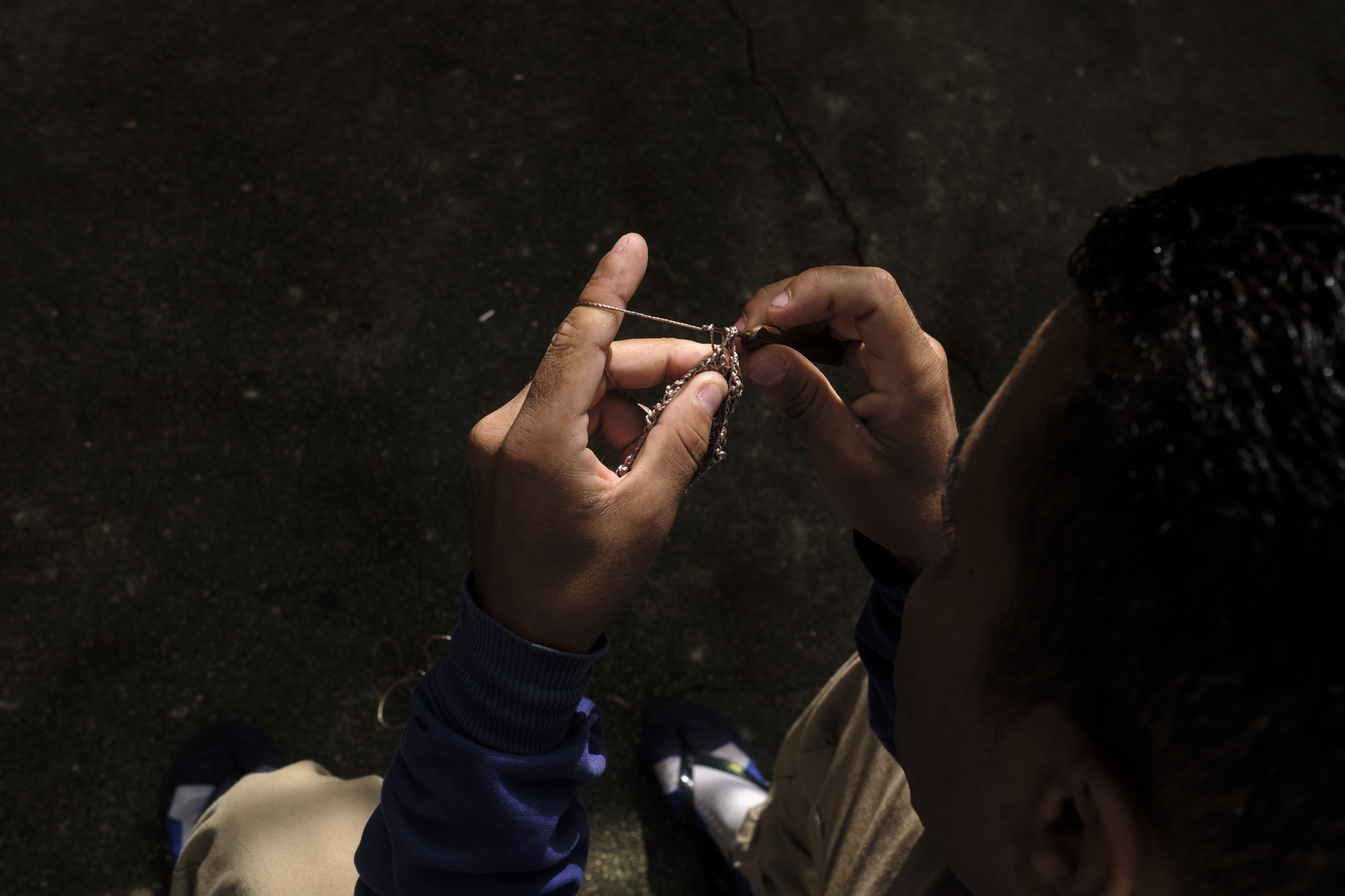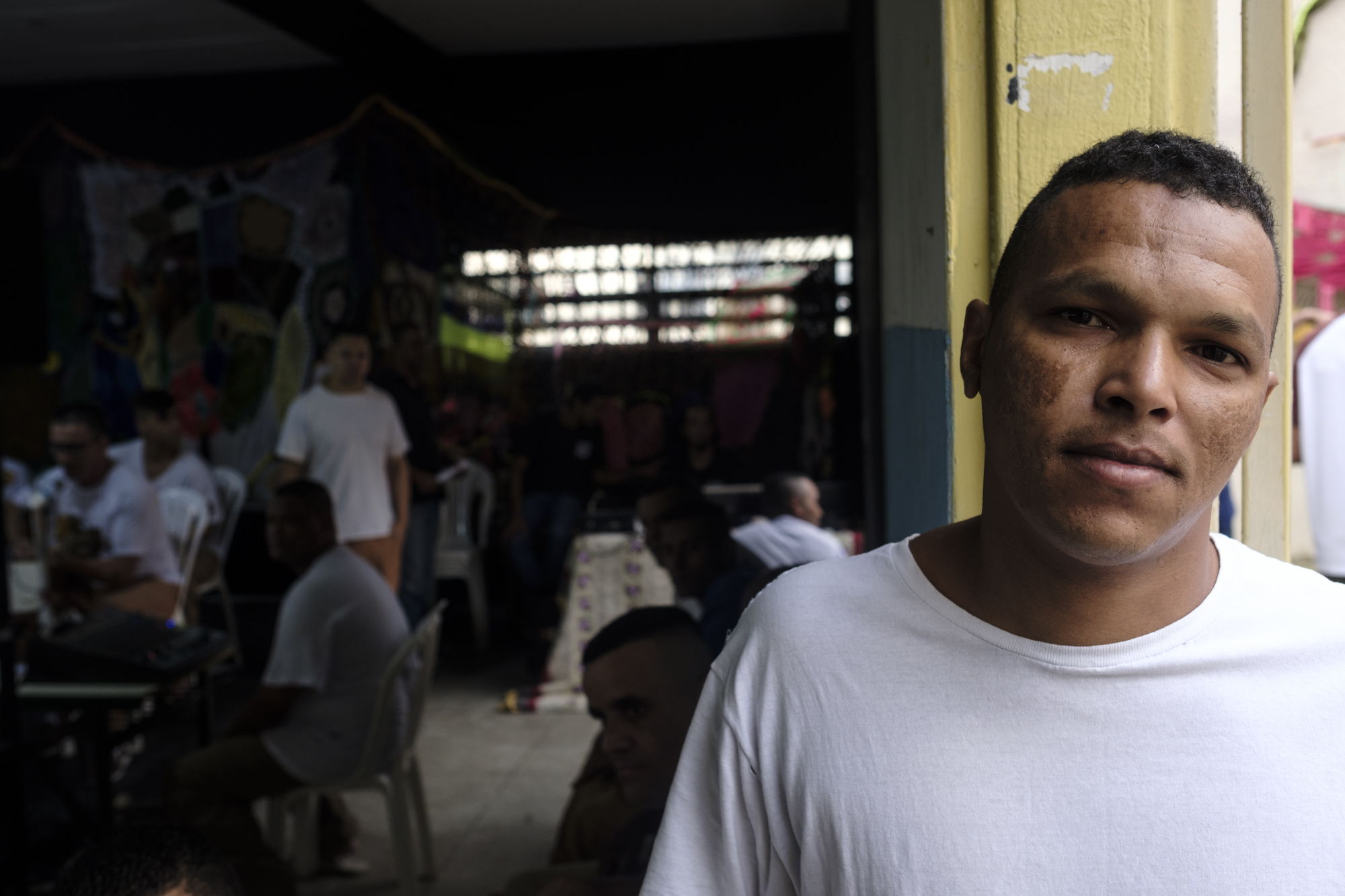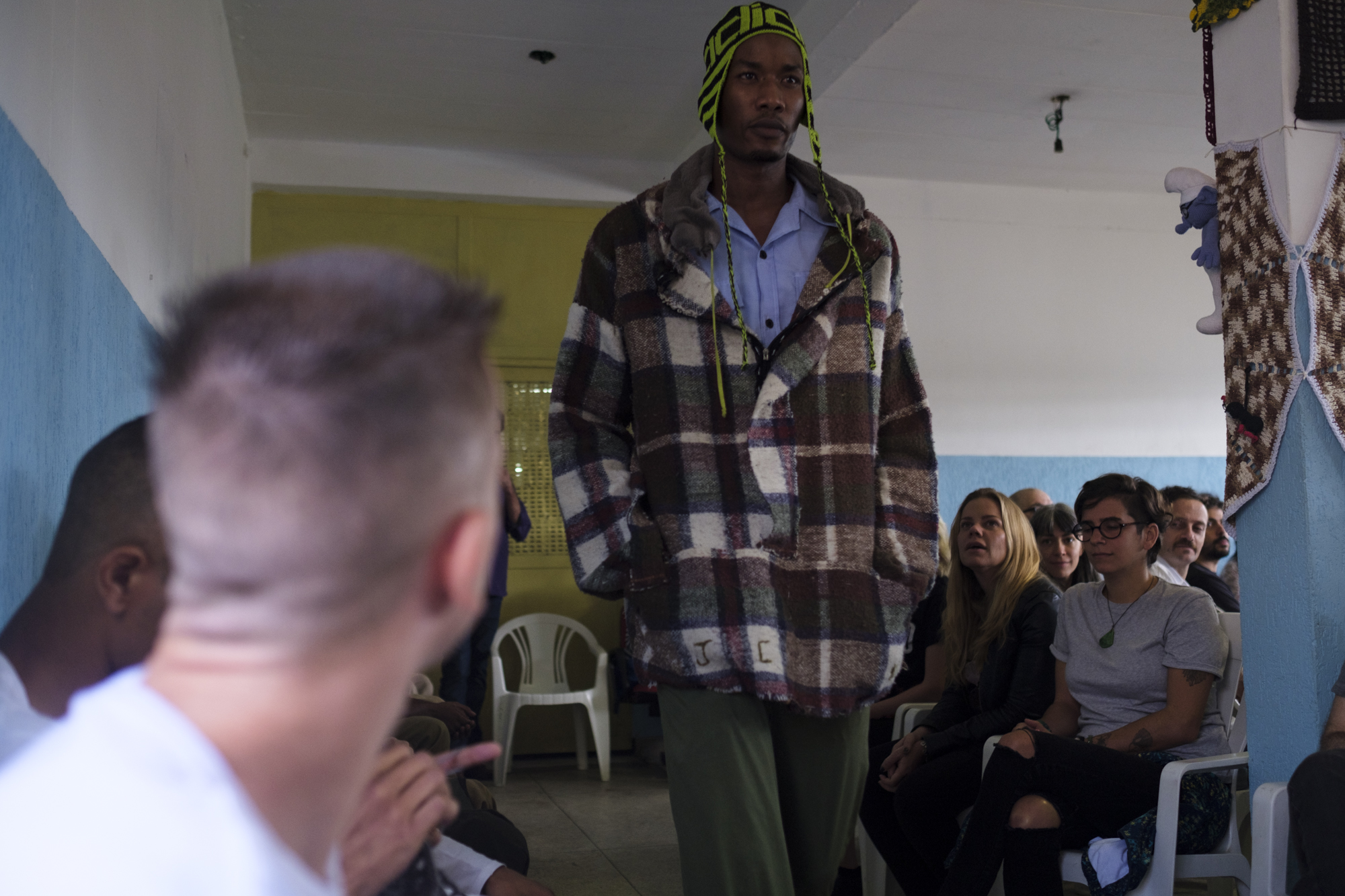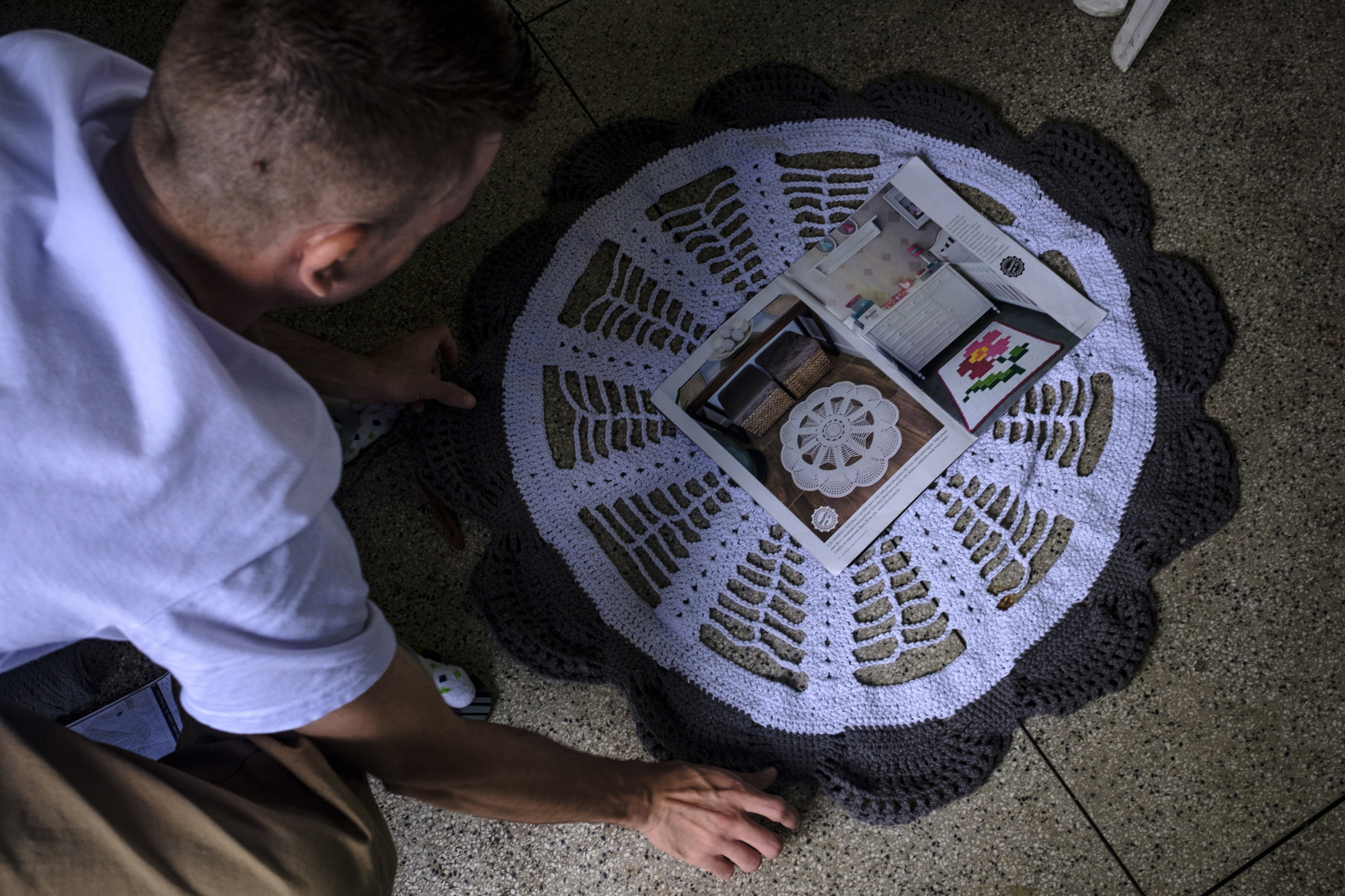A version of this article originally appeared on VICE Brazil.
Every Wednesday, Brazilian fashion designer Gustavo Silvestre goes to the all-male Judge Adriano Marrey penitentiary in Guarulhos, Brazil and teaches the inmates how to crochet. His visits are a part of Projeto Ponto Firme (“Firm Point Project,” in English), an educational initiative that Silvestre created back in 2015. They’re always a much-appreciated departure from daily prison life. But the visit on Wednesday, April 4 was particularly charged with activity, excitement, surprises, and tears as the inmates witnessed the clothes they had made being worn on the runway in a prison-wide fashion show.
Videos by VICE


The fashion show at Adriano Marrey was a precursor to the 45th edition of São Paulo Fashion Week (SPFW), which kicked off on April 21. For the first time ever, the event features clothes made by the inmates at Adriano Marrey under Silvestre’s guidance.
The in-house crochet lessons started in 2015 as an idea by Igor Rocha, the director of the prison’s educational programs. He’s worked in the Brazilian penitentiary system for over 20 years and arranges theater classes and various workshops for prisoners. As crocheting and sewing are typical activities in Brazilian detention centers, it made sense to implement a workshop for inmates who enjoyed the activity. Silvestre accepted the challenge of teaching advance courses to four inmates who already knew how to sew, and also took on another seven detainees who’d never touched a sewing needle before. In the last three years, according to the designer, over 100 inmates have went through his workshop. He added that the waitlist for the workshop exceeds the 20 available spots.
Stitch by stitch, his students make hats, kimonos, coats, and teddy bears. Others make huge fringe pieces, handbags, and beach dresses. The designs incorporate each designer’s individual history along with current fashion trends.

Felipe Lopes, 26, only put away his thread and needle when the fashion show started. He was already familiar with sewing, but he found that Silvestre’s class helped to improve his crochet work. He says that rugs, bath towels, and kitchen towels are his favorite items to sew, adding that he’d love to create his own brand one day and have his brother and friends model for the company. Lopes, who was reincarcerated in 2014, notes that his family is especially proud of him, although he remembers a scolding he received from his mother: “You had to go to jail to knit.”


Rodrigo Domingues, a music composer and member of the Brazilian hip-hop collective Original Rap, claims people on the outside view prison as “degrading and [a dead end].” The 33-year-old intends to change this perception by using his craft, further developing his designs, and continuing to sew outside of prison.


Rocha wanted to break the stereotype that men can’t crochet, and after recognizing that many male inmates do in fact sew, he and Silvestre came up with the idea for a crochet workshop that Silvestre would lead. After the program’s success, he asked Silvestre if they should do a fashion show.
Rocha believes that crochet is a good example of the creative potential that exists inside these walls, and adds that the inmates find the workshops empowering. He says the fashion show is a way of bringing hope to prisoners, inspiring them to believe that—even though they committed a crime—they’ll return to society with a new skill set and their heads held high.



When Lopes saw the long, open-backed dress he designed being worn on the runway, he says he was speechless. “[It was] indescribable,” he recalls.


Silvestre made sure all his students were present to receive an applause from their audience. “When I walked in, I was already completely emotional. I had to stop myself from crying,” he says. “Then, this unexpected strength came over me. I swallowed my tears so that I could stay strong and support these guys, because they were all really emotional too. It was all very touching. I don’t really know how to describe it; it hasn’t hit me yet.”


“What we’re doing here is labor-intensive art, and it’s valuable,” the designer says. He sees Projeto Ponto Firme as means of bringing a fresh perspective and broader horizon to his pupils. “It opens the door to new possibilities and hope.”
For Silvestre, Projecto Ponto Firme is starting to take more shape as the penitentiary and Guarulhos City Hall continue to cooperate. He says this will help promote and sustain the detainees’ work, as well as offer assistance for their reintegration into Brazilian society.




